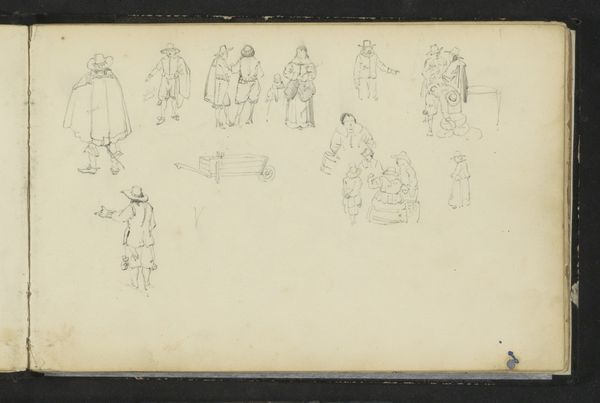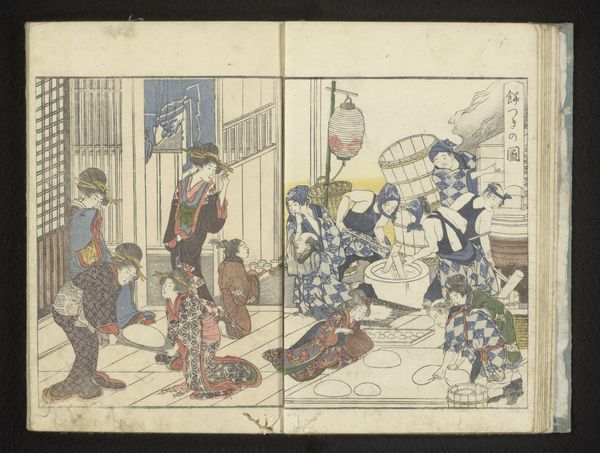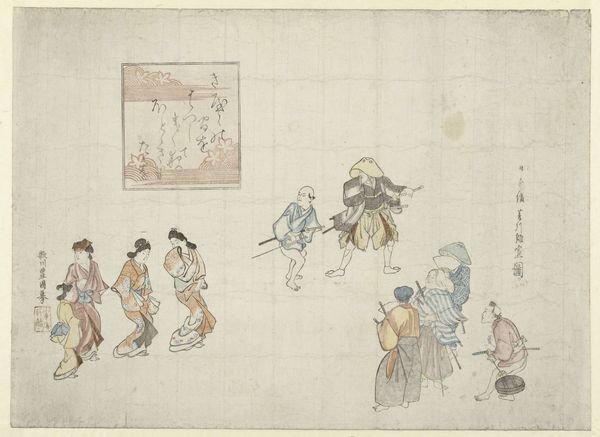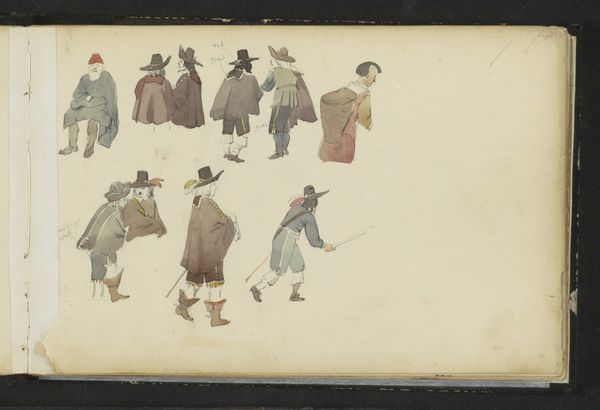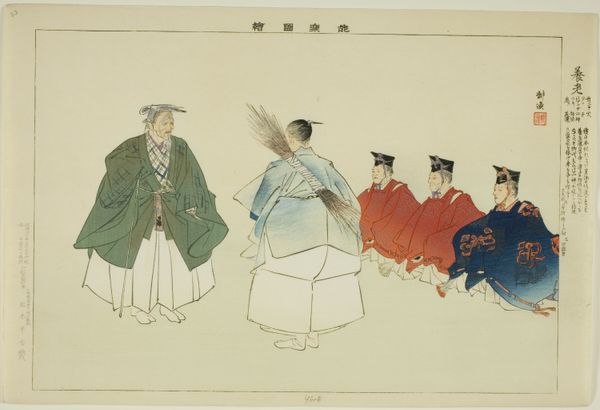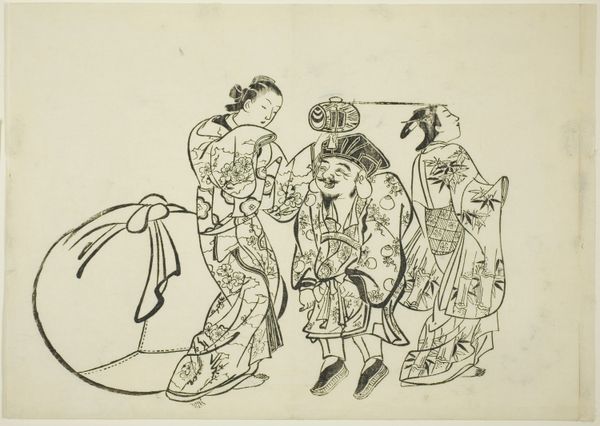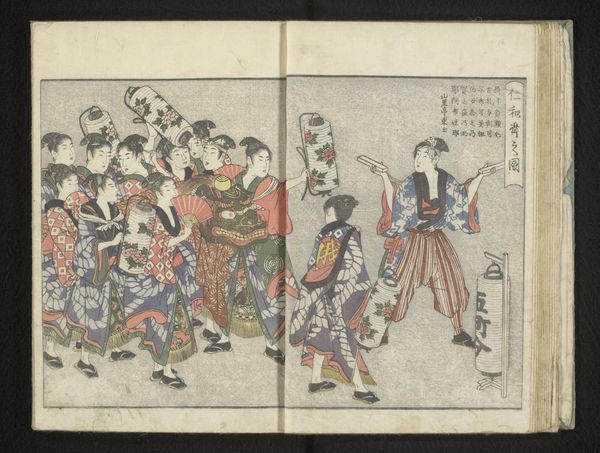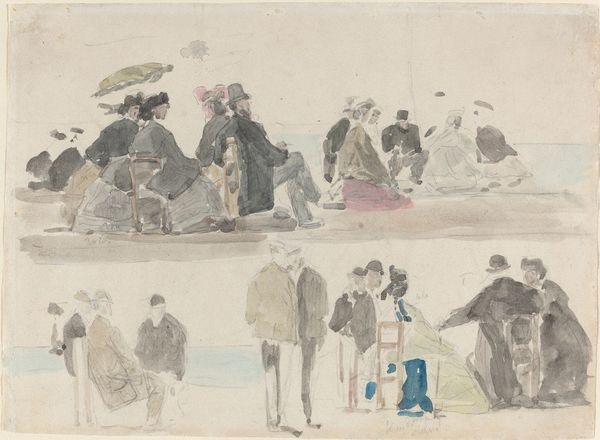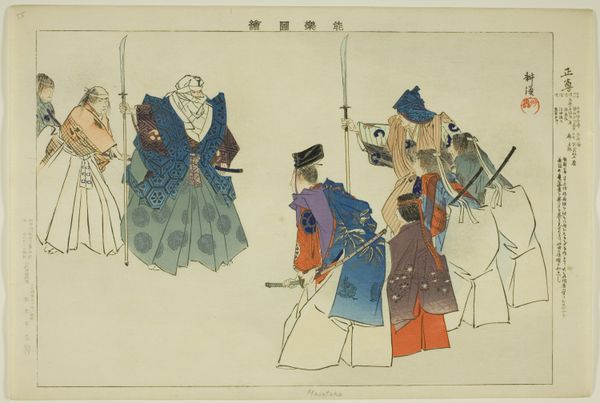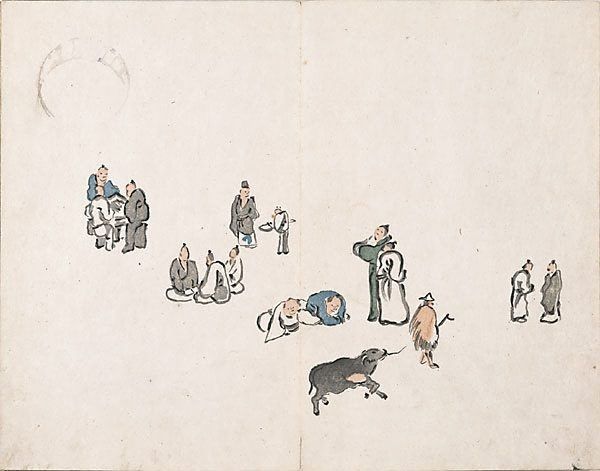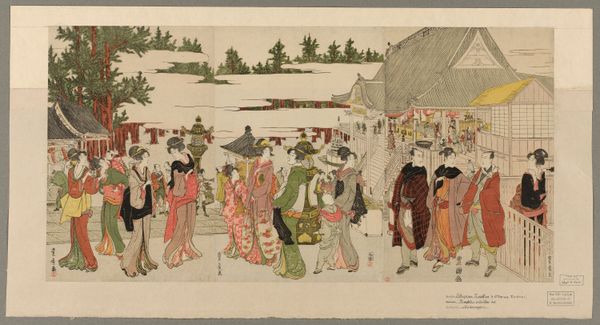
drawing, paper, watercolor
#
drawing
#
paper
#
watercolor
#
coloured pencil
#
genre-painting
#
mixed media
#
watercolor
Copyright: Rijks Museum: Open Domain
Editor: Here we have Cornelis Springer’s "Figuren in zeventiende-eeuwse kleding," a drawing with watercolor on paper, dating from around 1846 to 1882, housed in the Rijksmuseum. It feels like a snapshot, a collection of loosely rendered figures. How do you interpret this work in terms of its formal qualities? Curator: From a formalist perspective, the spatial relationships created by the artist, Springer, offer multiple interesting tensions. Observe how he uses the translucency of watercolor to create depth, and notice the varying degrees of detail in each figure. Some are sharply defined while others fade almost entirely into the background. Editor: Yes, the variations are quite striking. What’s the significance of these aesthetic choices? Curator: These deliberate ambiguities could serve to emphasize the act of observing itself. Is Springer not interested in accurately rendering this 17th century garb? Or is it in rendering visual perception? Also, consider the use of the picture plane: he is creating a composition of disparate visual experiences on one flat surface. Editor: So you're saying the medium is the message in a sense? Curator: Precisely! It highlights the artistic intention of presenting multiple perspectives simultaneously rather than representing a single unified scene. We see how Springer’s treatment of space, form, and material invites us to question our assumptions about representation. Editor: This perspective shifts my view completely, prompting me to focus on how the visual language constructs its meaning. I suppose it reveals much about the artist's focus beyond just depicting people from another century. Curator: Indeed. It is a reminder to closely examine how artworks actively shape our perceptions.
Comments
No comments
Be the first to comment and join the conversation on the ultimate creative platform.

